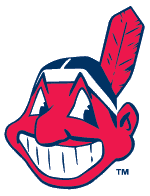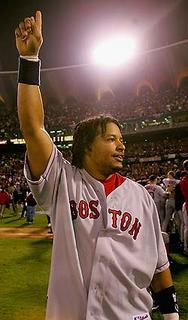
"Baltimore slugger Rafael Palmeiro tested positive for steroids a few months after telling Congress, "I never took steriods, period." Then today, Palmeiro said, "I mean to say, 'I never took steroids, question mark.'" -Conan O'Brien
For the past few days I have been mustering over the recent steroid controversy that is currently clouding major league baseball; regarding my recent thoughts, the catalyst is of course Rafael Palmeiro who is currently the highest profile player to test positive under the new drug testing guidelines adopted by Major League Baseball.
Palmeiro was drafted by the Chicago Cubs in the 1st round (22nd pick) of the 1985 amateur draft (The Cubs decided to retain Mark Grace at first base and traded Palmeiro in 1988 to the Texas Rangers). Throughout his carreer, Palmeiro has had some amazing accomplishments. Most notability, he is one of only four players (the others are, Hank Aaron, Willie Mays, and Eddie Murray) in the 3,000 hit, 500 home run club which surely would have gained him a first ballot entry into the holy shrine of baseball, the Hall of Fame. However, a long shadow of doubt has not only been caste upon his legacy as a player, but now there is speculation on whether or not he’ll even enter the Hall of Fame.
After much consideration, my thoughts in part concerning the matter are informed by strain theory. Strain theory, initially conceived by Robert K. Merton (1938), focuses on explaining why some groups or individuals in a society are more likely to engage in crime than others.
The crux of the theory presented by Merton argues that individuals are pressured into crime (e.g. illegal steroid use) when they are prevented from achieving such cultural goals as monetary success through legitimate avenues. The idea here is that lower class individuals are often blocked legitimate access to opportunities to attain a middle class lifestyle or monetary success, as they often reside in disadvantaged neighborhoods, receive inferior education, cannot afford college, etc.
Merton contends, that certain “social structures exert a definite pressure upon certain persons in the society to engage in nonconformist rather than conformist conduct…[thus]….[f]raud, corruption, vice, crime, in short, the entire catalogue of proscribed behavior, becomes increasingly common when the emphasis on the culturally induced success-goal becomes divorced from a coordinated institutional emphasis.”
Palmeiro was born September 24, 1964 in Havana, Cuba. In 1971, his father Jose Palmeiro a construction worker, immigrated to Miami with his family from Cuba. Rafael was just seven years old. One can speculate that had Palmeiro not fled the bleak economic conditions of Cuba, he probably would have remained just another sandlot ballplayer and most likely would have ended up working a menial job just as his father had.
With the vast economic incentives that professional sports especially baseball in the United States accords, is it really any wonder or surprise that people are ingesting steroids and any other substance for that matter, legal or not, to give them a competitive edge on the playing field? If you were competing for a $20 million dollar a year job, would you not do the same?
Such substances however don’t make a ballplayer any better at what they do. For instance, Albert Einstein drank coffee, which contains caffeine, a stimulant, which allowed him to stay conscious longer thereby allowing him to produce more scholarly material than he otherwise might have. Does drinking coffee make you smart? Certainly not. Does taking steroids make you a professional ballplayer? Certain not.
The solution to the problem is quite simple, however impossible in our market driven economy. If we made professional sports a 20 thousand dollar a year job the pressure (aside from the resultant fame amplified in part by the media) to succeed in such a market would be minimal at best. Why not make teaching a 20 million dollar a year profession? I guarantee coffee as well as other illegal stimulant consumption would skyrocket!
Perhaps Palmeiro should run for office, as he is already a liar, a skill no doubt needed as a politician. When he gets out of jail for perjury, he can run on a “read my lips” campaign.
Works Cited
Merton, Robert K. 1938. “Social Structure and Anomie” American Sociological Review
3 (October).




